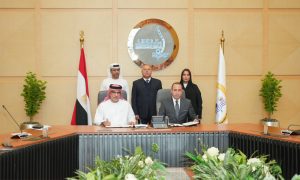Top 10 tips to manage multiple project stakeholders
Zander Muego, regional director of Thomas & Anderson, shares his advice

Zander Muego, regional director of Thomas & Anderson, construction and property consultants, is well versed in delivering project management and cost management consultancy for a wide range of projects.
Covering everything from leisure and entertainment industry fit-outs to large-scale government construction projects, he has garnered extensive experience in managing the various aspects of a project site.
Arguably the most important element of Muego’s job is acting as the pivotal point and lead on projects, building and coordinating the team of representatives from several suppliers, stakeholders and the client, which can be as many as ten individuals.
Here are his top 10 tips on how to excel when dealing with multiple stakeholders:
1. Tone at the top
This is a term used in the realm of corporate governance, but while sitting around the table with a number of contractors and consultants, the atmosphere will be heavily influenced by the approach taken by those leading the project. This will usually be a combination of the client and project manager (PM), both of whom must lead by example.
When dealing with several entities, it is even more important for the success of the project that the PM is positive and ensures any negative influences do not demotivate the team and interfere with the team’s function.
2. Lead from the front
The PM has to lead by example – ticking boxes and moving responsibility around the table will more than likely result in nothing getting done. The PM should take appropriate areas of responsibility on their own shoulders, which in turn creates acceptable norms within the group. A pro-active and hands-on approach will inspire the team.
3. Cover all the bases
When pulling multiple entity teams together, clearly defining the roles and responsibilities is essential. There will often be a unique set of circumstances surrounding a project with multiple entities; and when there are gaps problems will arise. The project manager needs to ensure every element of the required scope is covered. Developing a responsibility matrix will help. As the team is formed, this needs to be checked and monitored to ensure everything is covered and there are no gaps.
4. Face time
You need to meet regularly, but not too much. Striking a balance in this regard is important. Often in multi-party projects there is too heavy a reliance on meetings. If the team members are based in different locations, meetings can turn into an inefficient use of people’s time, leaving insufficient time to execute the actual work.
Finding ways to collaborate without the need for physical attendance can work very well – there are a multitude of online platforms that facilitate sharing of documents and related content while you speak face-to-face.
Where in-person meetings are required, a great approach, which has been implemented by one of our clients, is the use of high tables with no seats. This avoids people getting too comfortable and keeps the meeting brief and to-the-point. The result of this can be quite impressive, with people getting through the discussion in half the time.
5. Team selection
There is a whole world of academic research about which composition of individuals produces the best team, but from experience this is very difficult to put into practice when dealing with multiple external entities rather than internal teams. However, you still have the challenge of ensuring the team functions properly together, so this cannot be ignored.
Often, with multiple entity teams, the focus will be on function, technical skills and cost. Wherever possible, keep an eye on bringing together the right mix of personalities and consider who will work well together.
6. Culture of inclusion
You must try and establish a culture within the team where everyone is willing to contribute in an appropriate way. This is particularly relevant for regions like the Gulf, where there are often many nationalities and cultures involved in any project. If one entity has a particularly strong position they will voice their opinion passionately over a more circumspect or cautious member of the team.
The responsibility falls with the group leader, who must encourage everyone to give an equal level of input where appropriate and allow each team member to contribute in a manner they feel comfortable.
7. Establish a communication protocol
With this newly formed group of multiple entities, you must consider how to ensure the right information goes to the right people at the proper time. Important messages can get lost and there can be breakdowns in the project as a result. On the flip side, an equally challenging problem can be the insistence of individuals to copy everyone in to every piece of communication, resulting in information overload. The project manager should establish the protocol at the outset and monitor this as the project proceeds to ensure the process is followed throughout.
8. Align incentives
If multiple entities from several companies are working under different financial incentives, there may be disparity in terms of the common goal. Therefore, the PM must ensure everyone has the same, or at least interlinked KPIs. For example, when we are managing the design phase of a construction project, issues can arise where specialist consultants are too focussed on their specific area – not the wider project objectives. The project manager must ensure the coordination between such diverse team members is reflected within their contracted deliverables and project KPIs so all parties are working towards a common goal.
9. Linking strategy to deliverables
Always ensure the deliverables and KPIs are tied to the wider objectives of the project, as this often gets lost along the way.
This can be a common problem in the business world in general and one of the most challenging concepts for any manager or business leader to get a grip of. It is common in the construction industry for projects to have ‘gateways’ or ‘milestones’ throughout the design phase to ensure the project team takes a step back and reviews the status of the project against the original brief. This will often identify the project needs to be pulled back in line, to ensure the solution being developed represents value, as defined within the original project brief.
10. Cope with conflict
Particularly while going through the forming stage of the group’s development, there will almost certainly be conflict and it needs to be addressed quickly in order for the entire team to perform as a unit. This task will often land at the doorstep of the project manager.
Any conflict resolution is best tackled by getting the disagreeing parties to communicate with each other in a constructive manner. This will usually involve taking the issue ‘off line’ in the sense of the wider team and working through what are often communication breakdowns rather than fundamental issues. Such issues should always be dealt with as soon as possible, otherwise they can fester and resurface later in the project in a much more damaging way.

























